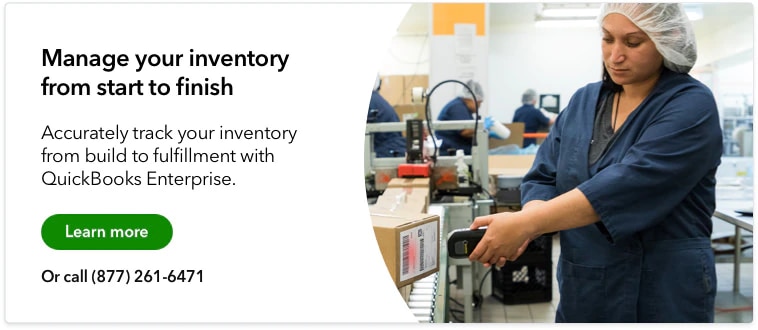With the recent lessons learned from existential supply chain disruptions, growing businesses would do well to consider strategies for insuring themselves against future troubles.
Just-in-case (JIC) inventory management is one of those strategies, which typically involves holding more inventory than requirements suggest. Implementing just-in-case inventory reduces the risk of stockouts or backorders, especially when faced with supply chain issues or unforeseen surges in demand.
What is just-in-case inventory?
Just-in-case inventory is the strategy of maintaining large amounts of inventory to safeguard against stockouts, supply disruption, or sudden increases in demand.
By having more inventory than initially forecasted, a company can be confident it will always have stock ready to fulfill customer orders.
JIC inventory management is used in all types of companies and industries. For example, manufacturers maintain extra raw materials, while distributors and retailers hold additional stock of finished goods.
This buffer (or safety) stock gives companies a competitive advantage when inventory can be challenging to obtain, including supply chain disruptions, natural disasters, or transportation difficulties.
As with any inventory management strategy, JIC inventory affects all areas of a company’s supply chain. Increased inventory holdings mean more money spent on purchases, more warehouse space needed for storage, and potentially a change in suppliers who can offer the most value for your company.
How is it different from just-in-time inventory?
At the opposite spectrum of just-in-case inventory is just-in-time inventory (JIT). Instead of proactively purchasing more inventory (also described as a “push” system), JIT operates reactively and only orders products or raw materials when needed (referred to as a “pull” system).
JIT systems aim to keep supply chain operations as lean as possible. It prioritizes having the minimum inventory level on hand to avoid wasting resources on dead stock.
As a result, JIT inventory is an efficient way to maximize cash flow, resources, and profitability. Coupled with the increasing accuracy of sales forecasts and supply chain optimization, just-in-time has become a popular method for managing inventory among modern companies. Some companies employ a hybrid of JIC and JIT inventory. This “push-pull” strategy guarantees enough buffer inventory to increase resiliency while still taking a cost-effective approach.
Advantages of holding just-in-case inventory
By intentionally carrying more stock than is required, JIC inventory can give a business peace of mind that it’s prepared if supply chain issues arise. Here are the most compelling competitive advantages of implementing JIC inventory.
Prevent lost sales
One benefit of holding excess inventory is the reduced risk of losing sales because you’re out of stock. Carrying more products than the projected demand allows your company to continue operations despite delays from replenishing inventory.
Maintains a good customer experience
Customers will often go with a company that provides good, consistent service. Being added to a waitlist or getting notified about rescheduled shipments not only leaves a customer with a bad experience but most likely shopping elsewhere as well.
Creates a competitive advantage
Supply shortages naturally reduce competition, leaving companies with inventory on hand at an advantage. Being able to consistently meet your market’s demand is puts you ahead of other businesses dealing with inconsistent suppliers and stockouts.
Produces economies of scale
JIC inventory requires more operation and storage costs. Fortunately, a company can balance this higher investment with lower unit costs and shipping frequencies.
The cost advantage brought about by bulk purchases, coupled with consistent sales, can be more profitable for companies in the long run.
Protects against forecast miscalculations
It can be challenging to create accurate demand forecasts, especially for new companies, entering untested markets, or experiencing major environmental shifts.
In these cases, having more than enough inventory to fulfill sales can be a better decision for companies navigating any uncertainty.
Disadvantages of holding just-in-case inventory
JIC inventory provides a reliable buffer against unforeseen circumstances, but it also comes with its share of disadvantages.
Ties up more resources
The choice to hold JIC inventory requires more upfront payment, dedicated warehousing, manpower, and inventory carrying costs. Without more working capital, this decreases the resources available for other areas of business. It can also lead to more work and added strain for the employees involved.
Increases likelihood of unsold inventory
Just as there’s a risk of losing sales from not holding enough inventory, there’s also a risk of dead stock if there aren’t enough sales. This is especially true for companies that sell seasonal or trendy products. Carrying additional stock can incur more spoilage or obsolete products.
Makes it harder to adapt to market changes
Let’s say there’s a change in the market that causes a drop in demand for a specific product. A company that employs JIC inventory may be left with large inventory costs it can no longer recoup. This accumulated inventory and loss in expected revenue makes it difficult for a company to quickly get back on its feet and pivot toward a new direction.
Best practices for managing just-in-case inventory
Companies can see the most benefit from just-in-case inventory by implementing the following best practices.
Know your optimum inventory levels
To best calculate the amount of safety stock you should purchase, it’s important to start with your current optimum inventory amount. Perform an inventory analysis to determine the number you need to be profitable, and then use that to arrive at your ideal JIC inventory level. If you run a wholesale business, take into consideration what your minimum order quantity (MOQ) is to ensure you will have inventory on hand for anticipated orders.
Consider how it will affect other areas of business
Before shifting to JIC inventory, look at your existing operations and resources. How much can you afford to allocate to products that may not be sold? Decide on an amount that protects your company from emergencies but doesn’t disrupt your operations. Put proper inventory control practices in place to keep your inventory operations efficient.
Implement accurate inventory tracking
Shifting to JIC inventory doesn’t mean you can slack off on tracking stock levels. In fact, there are now more products to account for and a greater need to reevaluate any subsequent effects. Keep tabs on your increased inventory levels with an all-in-one business solution like QuickBooks Enterprise, which tracks inventory across warehouses right down to the specific bin or pallet.
Have a plan for unloading dead stock inventory
Although JIC inventory revolves around having more than the forecasted demand, it’s still stock that should be sold like any other product. Always sell your surplus stock before newly purchased inventory and should your surplus remain unsold, have a go-to plan in place to turn dead stock into sales.
Final thoughts
Companies of all types can benefit from maintaining just-in-case inventory or some amount of safety stock.
Start with a solid grasp of your optimal inventory levels and projected customer demand and how an increase in stock will affect resources.
Once you understand what JIC inventory entails and have a system to track all these additional products, you can begin implementing the strategy to protect your company during unpredictable times.












